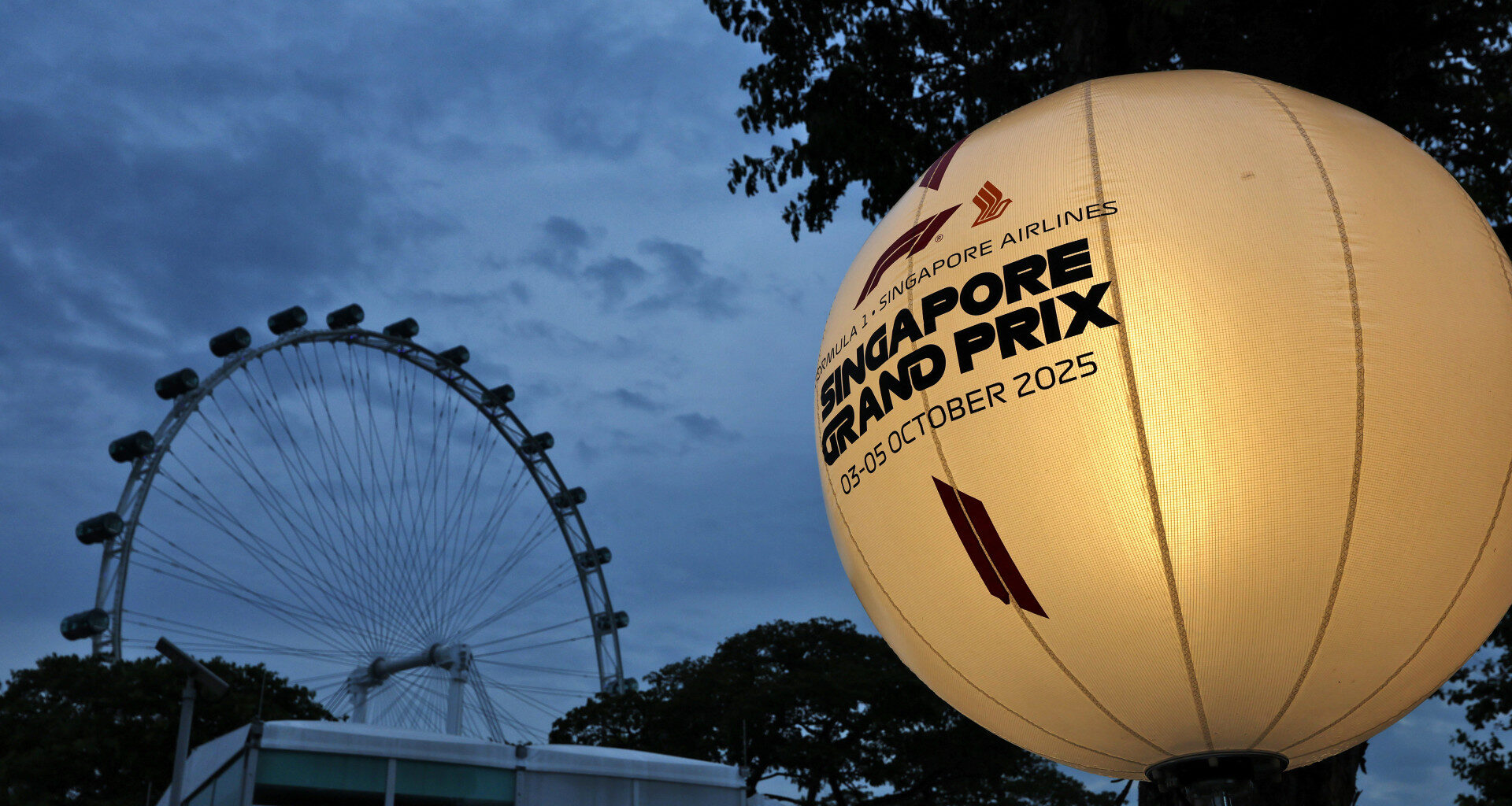
The FIA will impliment their new heat policy in Singapore this weekend. Image: XPB Images
The FIA confirmed the measure on Thursday after forecasts predicted air temperatures above 31°C at the Marina Bay Street Circuit, triggering Article 26.19 of the Sporting Regulations.
The rule follows a review of extreme conditions at the 2023 Qatar Grand Prix, where several drivers required medical attention due to heat and dehydration.
All cars must now be fitted with the Driver Cooling System, which includes pumps, plumbing, a coolant reservoir, and a heat exchanger.
Drivers may choose whether to wear the fireproof vest itself; those who opt out must add 0.5kg of ballast to maintain minimum car weight.
The vests circulate coolant through a network of tubes to help keep drivers’ core temperatures down. Initially intended as mandatory equipment whenever a heat hazard was declared, the vest was later made optional after complaints about discomfort in cramped cockpits.
George Russell was the first to trial the system at the Bahrain Grand Prix, crediting it with helping him maintain focus despite a major electrical problem en route to second place.
Singapore is one of the most physically demanding races on the calendar, combining narrow city streets with high heat and humidity.
Temperatures are expected to exceed 30°C for all three days of on-track action, and humidity will compound the physical challenge.
The heat hazard declaration aims to reduce the risk of dehydration, fainting, or other heat-related issues during both the race and supporting sessions.
Several drivers expressed their thoughts on the news in Singapore on Thursday.
Speaking with Speedcafe, Esteban Ocon said he had prepared for the weekend without expecting a heat hazard but welcomed the safety measure.
“At the end of the day, it’s a great thing,” he said.
“It can be dangerous. At some point one driver is going to be coming back from a cold or having a cold in the weekend and he might lose consciousness with how dehydrated we can get.
“So yes it is extremely tough… but for safety it is worth putting it. If it’s fine, I’m happy to have a bit more comfort as well.”
GPDA director Russell added that drivers generally support the system, even if it takes some adjustment.
“Not everybody finds the top comfortable, but I think some find it more comfortable than others, and of course over time you’ll be able to adjust it to your own preferences,” he said.
“But the concept is good, and when you’re racing in 90% humidity and the cockpits are getting on for 60°C, it’s a bit of a sauna inside the car, so I think we all welcome it.”
Carlos Sainz noted teams are learning to make the system more reliable.
“It’s a two-hour race,” he said. “I’ve done it 10 times in Singapore.
“If it breaks or it doesn’t work, I’m not worried. I’ll do the race and jump out fresh like I always do. But if it works, it’s better, because then you suffer a bit less.”
In addition to managing the driver’s comfort, the system affects minimum car weight.
Cars must carry 2kg extra during Free Practice and Qualifying, and 5kg for a Sprint or Grand Prix, reflecting the added equipment.
Teams have adjusted strategies to account for the extra mass while maximizing the cooling benefits in Singapore’s punishing conditions.
2025 F1 Singapore Grand Prix – Schedule, how to watch, TV times & more

